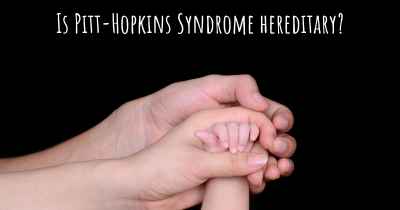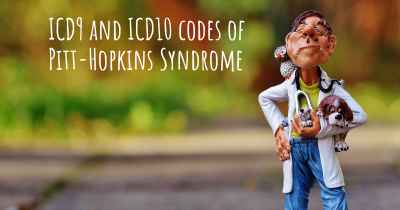What is the history of Pitt-Hopkins Syndrome?
When was Pitt-Hopkins Syndrome discovered? What is the story of this discovery? Was it coincidence or not?

Pitt-Hopkins Syndrome (PTHS) is a rare genetic disorder that was first identified in 1978 by Drs. Pitt and Hopkins. It is characterized by a range of physical, intellectual, and developmental disabilities. PTHS is caused by a mutation or deletion in the TCF4 gene, which plays a crucial role in brain development.
The discovery of Pitt-Hopkins Syndrome:
In 1978, Drs. David Pitt and Ada Hamosh Hopkins encountered two unrelated patients with similar symptoms, including severe intellectual disability, distinctive facial features, and breathing abnormalities. Recognizing the similarities, they hypothesized that these cases might be caused by a genetic mutation. Through further research and collaboration, they confirmed their hypothesis and named the condition Pitt-Hopkins Syndrome.
Genetic basis and TCF4 gene:
Researchers later discovered that Pitt-Hopkins Syndrome is caused by mutations or deletions in the TCF4 gene. The TCF4 gene provides instructions for producing a protein that acts as a transcription factor, regulating the activity of other genes involved in brain development and function. Mutations in this gene disrupt the normal functioning of the protein, leading to the characteristic features and symptoms of PTHS.
Recognition and prevalence:
Initially, Pitt-Hopkins Syndrome was considered extremely rare, with only a handful of cases reported. However, as genetic testing techniques improved, more cases were identified worldwide. The prevalence of PTHS is estimated to be around 1 in 30,000 to 60,000 individuals, although the exact number may be higher due to underdiagnosis or misdiagnosis.
Clinical features and symptoms:
PTHS is characterized by a distinct set of physical and intellectual features. Individuals with PTHS often have a broad and prominent forehead, deep-set eyes, a wide nasal bridge, a prominent Cupid's bow-shaped upper lip, and a wide mouth. They may also exhibit breathing abnormalities, such as episodes of hyperventilation or breath-holding.
Intellectually, individuals with PTHS typically have severe to moderate intellectual disability. They may have delayed or absent speech, limited communication skills, and difficulties with motor coordination. Behavioral characteristics can include hyperactivity, repetitive behaviors, and autistic-like features.
Diagnosis and management:
Diagnosing Pitt-Hopkins Syndrome involves genetic testing to identify mutations or deletions in the TCF4 gene. However, due to the rarity of the condition and its variable presentation, diagnosis can be challenging and may require a multidisciplinary approach involving geneticists, neurologists, and other specialists.
As of now, there is no cure for Pitt-Hopkins Syndrome. Treatment primarily focuses on managing the symptoms and providing supportive care. This may include early intervention programs, speech therapy, physical therapy, and occupational therapy. Additionally, individuals with PTHS may benefit from behavioral interventions and educational support tailored to their specific needs.
Research and future prospects:
Since its discovery, ongoing research has aimed to deepen our understanding of Pitt-Hopkins Syndrome and develop potential therapeutic interventions. Scientists are investigating the underlying mechanisms of TCF4 gene mutations and exploring potential drug targets to alleviate the symptoms associated with PTHS. Additionally, efforts are being made to improve genetic testing techniques and increase awareness among healthcare professionals to ensure early and accurate diagnosis.
In conclusion, Pitt-Hopkins Syndrome is a rare genetic disorder first identified in 1978 by Drs. Pitt and Hopkins. It is caused by mutations or deletions in the TCF4 gene, leading to a range of physical, intellectual, and developmental disabilities. While there is currently no cure, ongoing research offers hope for improved management and potential therapeutic interventions in the future.








